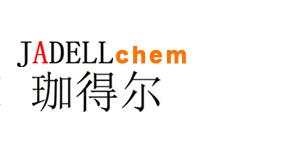Recombinant Human Maspin 能抑制乳腺肿瘤的侵袭性和运动性。也是一种有效的血管生成抑制剂。
Synonyms
rHuMaspin; Serpin B5; PI-5 ; 重组人乳腺丝抑蛋白
Species
HumanSource
E. coli Accession
P36952 Gene ID
5268 Molecular Weight
Approximately 42.1 kDa AA Sequence
MDALQLANSA FAVDLFKQLC EKEPLGNVLF SPICLSTSLS LAQVGAKGDT ANEIGQVLHF ENVKDIPFGF QTVTSDVNKL SSFYSLKLIK RLYVDKSLNL STEFISSTKR PYAKELETVD FKDKLEETKG QINNSIKDLT DGHFENILAD NSVNDQTKIL VVNAAYFVGK WMKKFPESET KECPFRLNKT DTKPVQMMNM EATFCMGNID SINCKIIELP FQNKHLSMFI LLPKDVEDES TGLEKIEKQL NSESLSQWTN PSTMANAKVK LSIPKFKVEK MIDPKACLEN LGLKHIFSED TSDFSGMSET KGVALSNVIH KVCLEITEDG GDSIEVPGAR ILQHKDELNA DHPFIYIIRH NKTRNIIFFG KFCSP Appearance
Lyophilized powder. Formulation
Lyophilized after extensive dialysis against PBS. Endotoxin Level
<0.2 EU/μg, determined by LAL method. Reconstitution
Reconstitute the lyophilized recombinant Human Maspin (rHuMaspin) to 100 µg/mL using ddH2O. Storage & Stability
Lyophilized recombinant Human Maspin (rHuMaspin) is stored at -20°C. After reconstitution, it is stable at 4°C for 2 weeks or -20°C for longer. It is recommended to freeze aliquots at -20°C or -80°C for extended storage. Shipping
Room temperature in continental US; may vary elsewhere. Background
Maspin is a unique member of the serpin family that shares extensive homology with monocyte-neutrophil elastase inhibitor, PAI-2 and other serpins. Maspin has been shown to inhibit invasion and motility of mammary tumors. Tumor transfectants expressing maspin exhibit decreased growth and metastasis in nude mice. Maspin gene expression is not detected in most breast tumors and loss of its expression is correlated with tumor invasiveness. Maspin is also found to be a potent angiogenesis inhibitor. In human breast tissue, maspin seems to be present more in luminal than myoepithelial cells, and it has been suggested that those maspin-expressing myoepithelial cells form a defensive barrier for the progression from ductal carcinoma in situ to more invasive carcinomas. A dispute exists regarding whether maspin acts as a protease inhibitor among biochemists[1]. |



